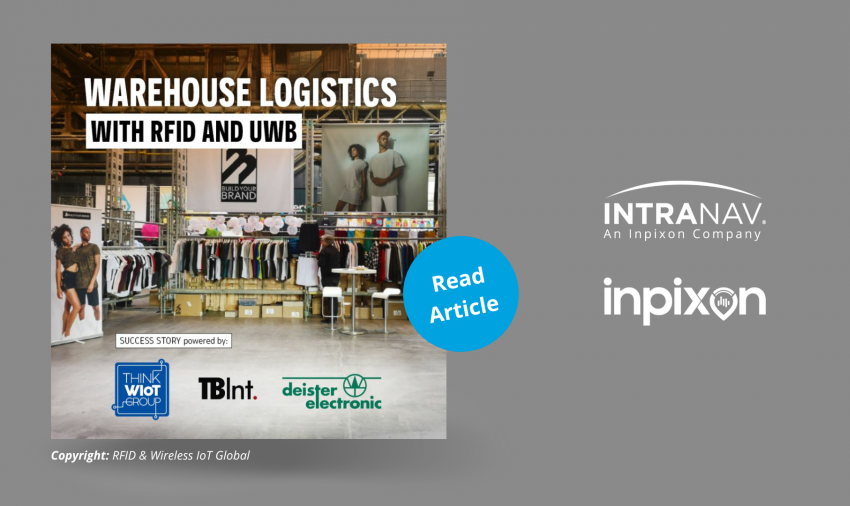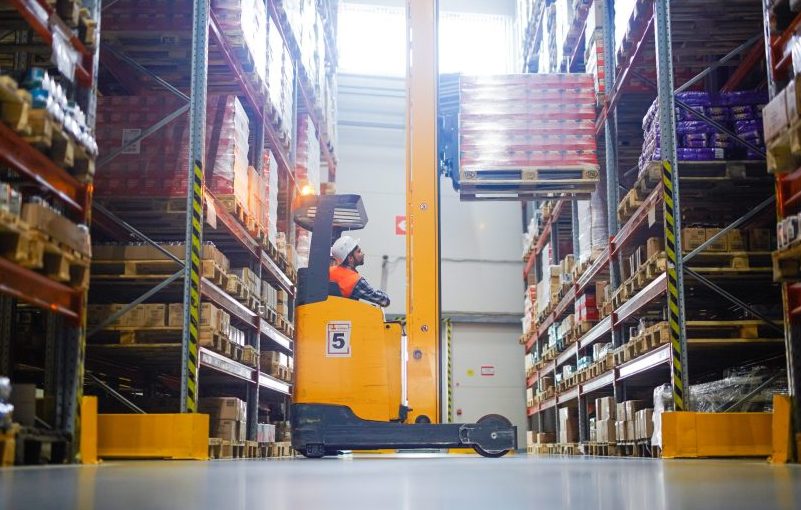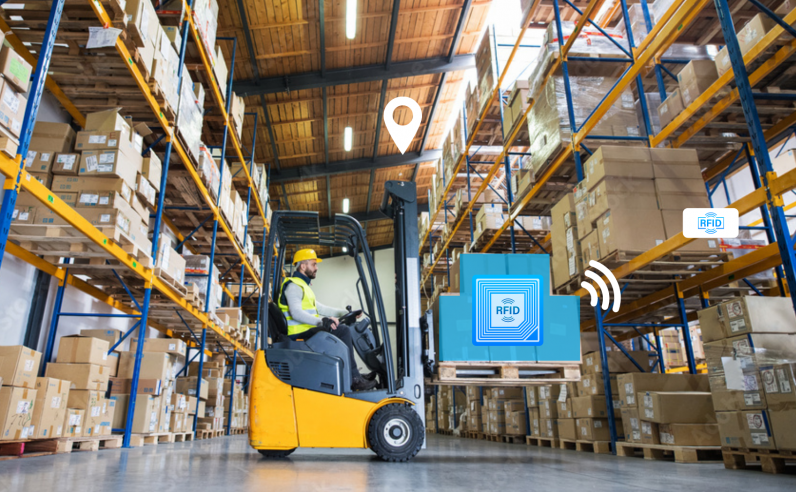03.11.2022
5 Key Steps,
for Building a Smart Warehouse in 2023
IoT platforms are changing the way warehousing, supply chains and intralogistics flow, bringing a new level of transparency and automation to operations and helping to maximize value from available resources. The process of building a smart warehouse to transform operations can be complicated but it starts by identifying your goals and examining your own warehouse activities. Where do you waste most of your time and money? And how can these processes be improved with location technology?
In this article, we’ll go over 5 key areas to optimize and begin your smart warehouse journey, which can increase your productivity and efficiency by up to 40%, including best-practice cases that many logisticians struggle with.
1. Track Assets to Reduce Search Times and Re-work
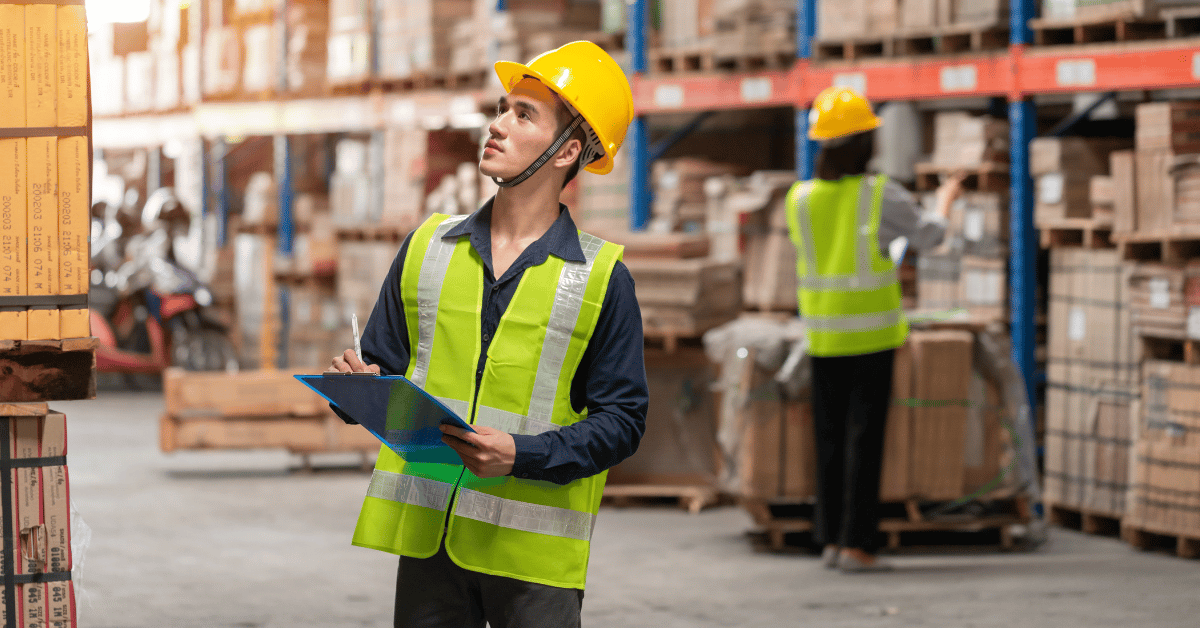
In any warehouse there are easily thousands of assets moving throughout the facility, and it can be a challenge to be in control of operations when you don’t know exactly where assets are or when they’re moving. With an asset tracking system in place in your warehouse you can easily find the exact location of any item, drastically reducing search times. So how does it work? This process starts by adding tracking tags or sensors to any areas of the warehouse that you want tracked. This can include any machinery, equipment, individual parts or products being passed through the supply chain, vehicles or forklifts that transport items throughout the warehouse and more.
When everything is tagged, it can then be connected to an IoT platform like INTRANAV.IO that shows all the assets in the warehouse through their digital twin (the virtual representation of each asset) which can be visible on a digital map of the warehouse. You can also search for the asset you’re looking for, find it on the map and then know exactly where to go to find it in person instead of spending a lot of time trying to find it manually in a large warehouse.
2. Automate Manual Processes
Eliminate manual scanning for logistics workers and forklift drivers by automating processes (like barcode scanning) using technology such as auto-ID. When scanning is done manually, workers are required to identify an asset by finding its serial number or material ID and scanning a barcode. But with auto- ID, assets are automatically identified, and their information can be entered into computer systems without human involvement.
This can work either through RFID tags or other RTLS tags that have precise location awareness such as UWB radio frequency technology. There are even more in-depth smart warehouse solutions, such as those from INTRANAV, an Inpixon company. By equipping several sensors on the forklift (such as RFID, UWB or even LiDAR in combination with the INTRANAV.IO platform), it simplifies and accelerates processes from storage to retrieval and always posts the information up-to-date in the ERP or EWM system. Because these processes are done automatically, it saves a lot of time spent scanning and making sure mistakes aren’t being made, and assets can move and are processed throughout the warehouse much quicker.
3. Optimize Transportation Routes
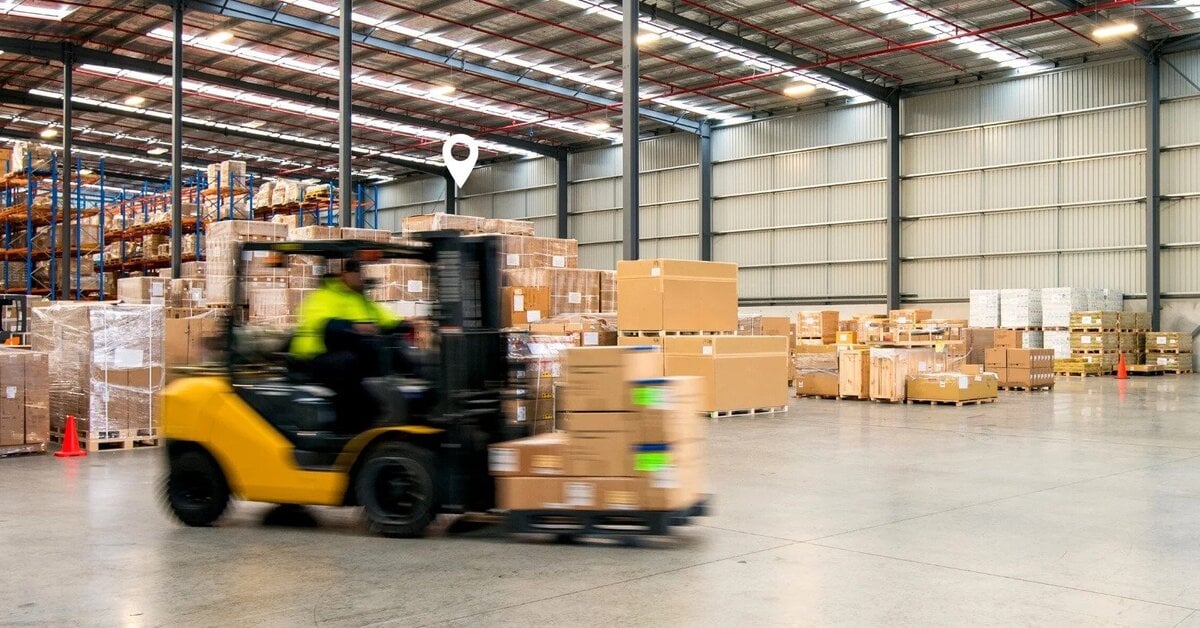
Forklift drivers can face many obstacles in their routes, from assets being misplaced and blocking the way, traffic caused by many forklifts taking the same route, or having to be careful not to hurt any workers on-site. Considering the importance of forklifts in transporting goods on time for logistics processes to flow properly, optimizing their routes can make a big difference in the efficiency of a warehouse.
Most forklift drivers cannot be certain that they drive the most efficient route, even if they can drive the orders perfectly on time. That’s why an IoT platform that tracks forklifts can collect data on the routes that forklifts take and suggest the most optimized route to avoid traffic jams. By using INTRANAV.IO’s smart warehouse modules, the INTRANAV system remembers where free storage spaces are available, for example, and can thus show the driver the shortest route to the next storage space, saving a considerable amount of time. This can also be shown visually on an analytics dashboard through a heat map, showing which areas of the warehouse are busiest and which routes aren’t used as much. This data will help navigate situations, such as knowing that an AGV will cross their path (in hybrid fleets) and how best to drive around it.
4. Create Efficient Employee Workloads
Warehouse workers are key to the success of the organization, but their workloads can be optimized so that they’re spending less time on manual processes, and more time bringing extra value to the company. For example, a conventional warehouse process can look like the following:
● Goods arrive at the warehouse, where they are checked, scanned, received, repalletized, relabeled, stored, and sorted.
● A transport request must be entered in the system
● The forklift driver must approach the goods where the right goods must be loaded on the stacker, and the forklift operator must find the right rack for storage.
● In this process, drivers also physically get out of the forklift to scan the pallets every time they are put in and taken out of storage.
● The same process happens for retrieval and preparation for shipment, where the forklift driver has to find the right shelf again and post the goods out of the storage location in the Warehouse Management System (WMS). Workers then have to pick the goods, sort them according to the orders, repack them and then hand them over to the forwarder.
These processes can easily become time-consuming, and when processes like these are automated with IoT technology that creates more efficient routes, reduces the amount of manual work, and provides warehouse managers with data to make better decisions, it drastically reduces their workload.
In addition, when a warehouse takes advantage of an IoT platform, it can also be connected to systems like Enterprise Warehouse Management systems to manage inbound and outbound processes and connects to tools that monitor warehouse activities for complete visibility. With automation comes a bigger focus on making decisions based on data, rather than manually gathering information and comparing performance reports.
5. Use Data to Prevent Inventory and Storage Errors
Without the use of technology, warehouse processes can be error prone. All kinds of mistakes can happen, from the wrong items entering an assembly line, to the wrong items being placed in trucks for transportation, to missing items when doing manual scanning. A common scenario is when forklift drivers arrive with assets to the warehouse, and they look for the right shelf location to place them – and then shelves are full because someone has forgotten to carry out the booking scan, causing an inventory error. Along with labeling issues, employees can encounter issues like barcodes no longer being legible, causing scans to be mixed up or forgotten. The topic of “error-proneness” extends across the entire intralogistics processes.
These activities already show how much manual processes are susceptible to errors behind each individual process – after all, not every warehouse consists of an automatic small parts rack. These errors can be further amplified by internal or external factors, such as new employees getting used to a system or machinery needing maintenance, which is why IoT platforms provide a level of transparency of every process.
When all areas of the warehouse are tagged, employees can easily get notified if a wrong item is placed on a forklift, or if a process took longer than usual due to traffic, maintenance requirements, or from a specific employee that needs more training. IoT platforms not only point out errors but provide insights on what processes need to be optimized – which also results in companies being able to take advantage of predictive maintenance.
Start Building Your Smart Warehouse Today
IoT platforms are key to building a smart warehouse and keeping competitive in Industry 4.0. With a platform like INTRANAV.IO, organizations can take advantage of features like the support of supply chain and logistics processes with real-time data, the ability to implement location-based process automation and generate data that the warehouse manager did not have before. To learn more about building an intelligence warehouse, watch our free on-demand webinar!

Autor
Ersan Guenes, SVP Product IIoT
Ersan Guenes is Senior Vice President (SVP) of Product for IIOT (Industrial Internet of Things) at INTRANAV, an Inpixon company.
Learn more About



